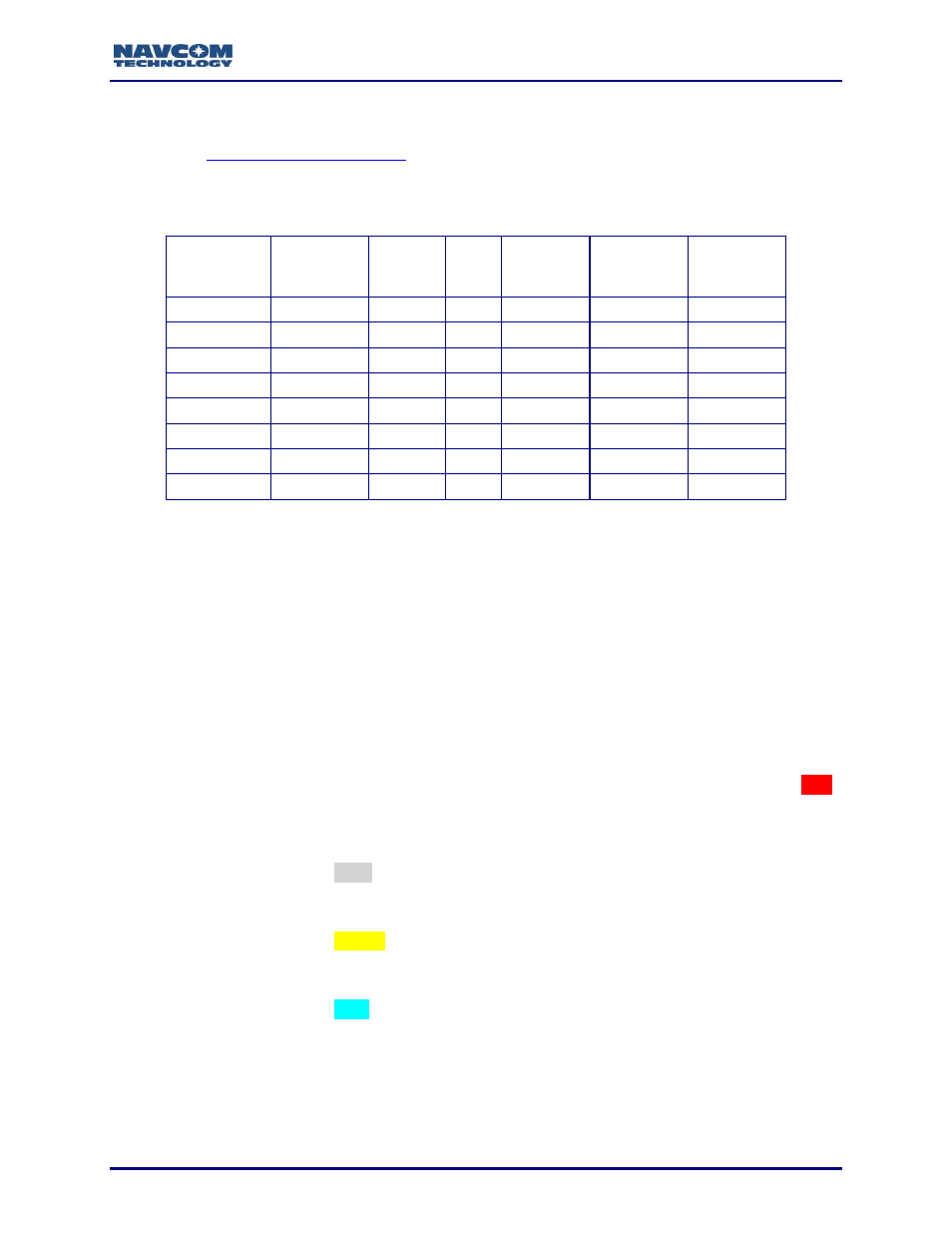Antenna installation, Table 213: acceptable cable lengths – NavCom Sapphire Rev.J User Manual
Page 421

Sapphire Technical Reference Manual Rev. J
421
Antenna Installation
Refer to the
Chapter 4, for antenna installation considerations.
Table 213 describes the maximum cable length between the antenna and the SF-3050 based
on cable type without an external LNA.
Table 213: Acceptable Cable Lengths
Cable Type
Atten. (dB)
per 100 Ft.
Cable
Length
in Feet
Loss
in dB
Atten.
(dB) per
100 m
Cable
Length in
Meters
Loss in dB
RG-58C
19.605
36.00
7.06
64.32
11.00
7.08
RG-142
16.494
43.00
7.09
54.12
13.00
7.04
RG-213
9.564
74.00
7.08
31.38
22.50
7.06
RG-223
17.224
41.00
7.06
56.51
12.50
7.06
LMR600
3.407
207.00
7.05
11.18
63.00
7.04
LMR400
5.262
133.00
7.00
17.26
41.00
7.08
LMR240
10.127
70.00
7.09
33.23
21.00
6.98
LMR195
14.902
47.00
7.00
48.89
14.00
6.85
Longer cable lengths are possible with the appropriate use of a LNA. Please contact your
NavCom dealer or NavCom Product Support for additional guidance.
Update Profile (with Ethernet Port Base Station and Radio Settings)
The default SF-3050 profile sets the receiver up in a Rover application. Therefore, the end-user
will need to make a number of setting changes to meet the needs of the base application.
1. Copy the settings below to Note Pad and label the file as Network Base
–
Leave the file open for editing.
For ease of demonstrating what is needed, this profile is: Network Base - Sample.npt
Here is an example of a configured base station for Ethernet. The messages highlighted in Red
should not be changed or experimented with by the user. These are not documented in the
TRM and are for engineering/factory use only; however, when the profile is retrieved from the
SF-3050, these will appear, and setting them correctly here reduces the likelihood of errors.
The messages highlighted in Gray should not be changed or experimented with by the user.
These are documented in the TRM; however, when these are set inappropriately, the base and
client rover performance can be profoundly affected.
The messages highlighted in Yellow must be changed, based on local information appropriate
for that field, in order for the SF-3050 to operate as a base station. Additional messages are
also needed to support additional output formats.
The messages highlighted in Blue are the local Ethernet information.
Each installation is unique and may require fewer or additional data turned off or on. Once the
equipment is operating as desired, be sure to update the profile as appropriate. This ensures
that the receiver starts up in the correct configuration should the site suffer a power outage and
allows a replacement receiver to be programmed in like fashion with ease.
